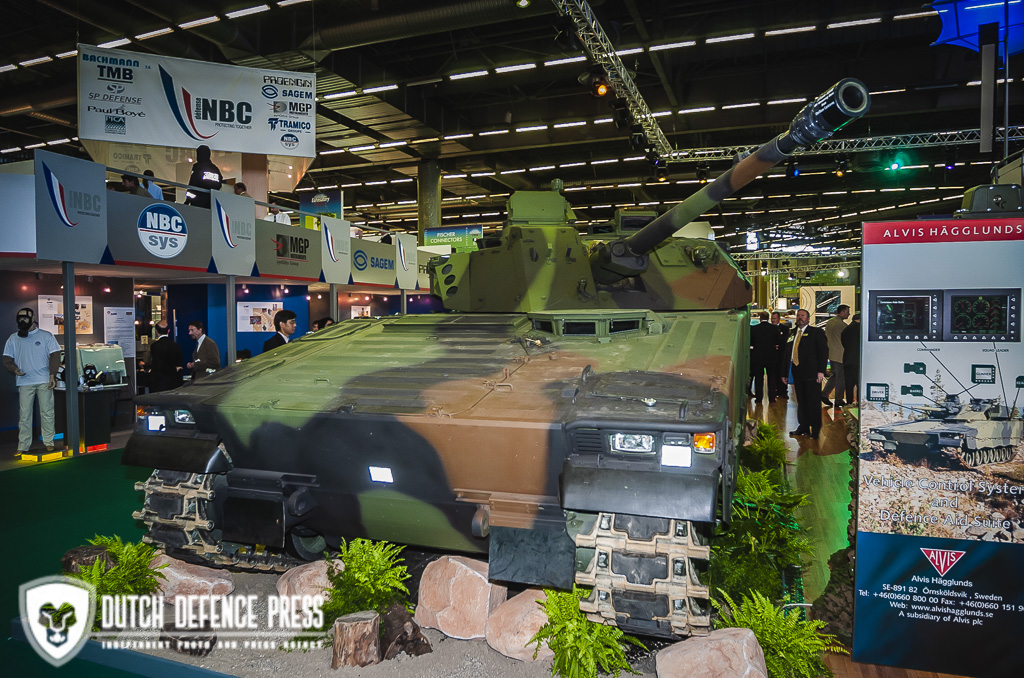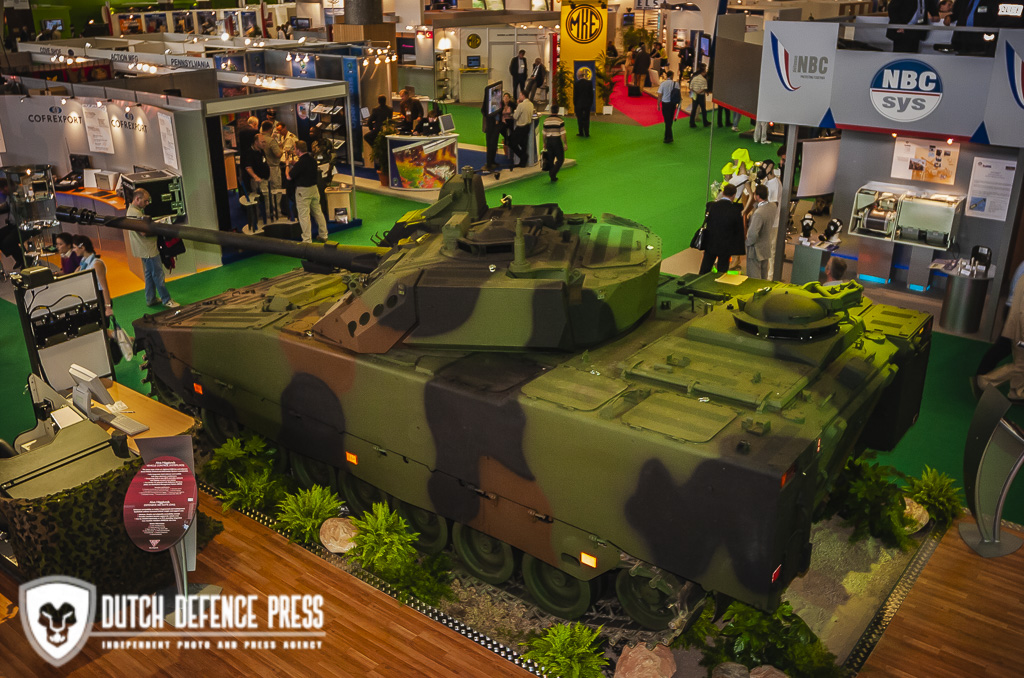Timor hat geschrieben: ↑Mi 6. Dez 2023, 21:21Da reißen wir mit unseren Ulan, die nach 20 Jahren gerade mal neue Optiken und ein paar elektronische Helferlein bekommen nicht viel. Zudem die gravierenden (Konzept bedingten) Nachteile ja bleiben: keine Pal, kein Minenschutz, keine Airburst Fähigkeit...
Die nutzungsdauerverlängerten CV90 der
schwedischen Streitkräfte und der
Schweizer Armee haben ebenfalls keine PAL und großteils keinen Minenschutz (bis auf den CV9040C). Airburst-Munition hat lediglich Schweden mit der
Bofors 3P eingeführt. Dafür bekommen sie nach über zwanzig Jahren Nutzungsdauer bestenfalls neue Fahrersichtsysteme oder neue IKT-Ausstattung (Schweden).
Dass der SPz "Ulan" über keine Programmierausstattung an der Maschinenkanone verfügt, liegt daran, dass so eine Fähigkeit in den 1980er-Jahren für Landfahrzeuge nicht gefordert worden ist und die damaligen Mauser-Werke keine Version der MK 30 mit Airburst-Munition in Produktion hatten:
http://web.archive.org/web/200207261409 ... /index.htm
Das Knowhow zur Entwicklung der MK 30-2/ABM kam erst
1999 mit der Übernahme von Oerlikon Contraves durch die Rheinmetall DeTec AG in den Konzern. Sie wurde für den deutschen Schützenpanzer PUMA konzipiert - da befand sich der ASCOD schon lange in Produktion und Österreich hatte gerade erst den Kaufvertrag für den SPz "Ulan" abgeschlossen:
14.02.2000
Integration der Oerlikon Contraves AG in die Rheinmetall DeTec AG vollzogen
Nach der Zustimmung der Aufsichtsratsgremien, des Bundes-kartellamtes und der schweizerischen Wettbewerbskommission ist die Integration der Oerlikon Contraves AG in die Rheinmetall DeTec AG vollzogen. Mit diesem Zusammenschluß baut die Rheinmetall DeTec AG auf dem Weltmarkt ihre Kompetenz als Komplettanbieter für das Heer konsequent aus.
Durch den Erwerb der Oerlikon Contraves AG, der im September 1999 erfolgt ist, hat die Rheinmetall DeTec AG ihr Produktprogramm verstärkt und vertieft und zugleich ihre internationale Wettbewerbsfähigkeit verbessert
Die jetzt der Rheinmetall DeTec AG zugeordnete Oerlikon Contraves AG ist ein weltweit anerkannter Anbieter von kombinierten Kanonen- und Lenkwaffensystemen zur Flugabwehr. Das Unternehmen erwirtschaftet mit rund 2100 Mitarbeitern einen Gesamtumsatz von 500 Mio CHF. Die Rheinmetall DeTec AG erzielt mit der Integration der Oerlikon Contraves AG einen wehrtechnischen Umsatz von etwa 1,6 Mrd Euro und beschäftigt rund 10 000 Mitarbeiter.
http://web.archive.org/web/200012181051 ... ews/82.htm
The MK 30-2/ABM was developed as the main armament of the new German PUMA infantry fighting vehicle. Air burst munition (ABM) rounds feature a programmable ignitor. The best possible combination of a high rate of fire and state-of-the-art ammunition technology makes the MK 30-2/ABM an uncompromising and reliable weapon system which can be deployed universally.
http://web.archive.org/web/200609250532 ... ng=3&pdb=1
Vertrag über Ulan Schützenpanzer für das Bundesheer rechtskräftig (7. Mai 1999)
https://www.bmlv.gv.at/cms/artikel.php?ID=1710
05/23/2003
Germany opts for Mauser-Werke automatic cannon MK 30-2 with Airburst Munition
Mauser-Werke Oberndorf Waffensysteme GmbH and Oerlikon Contraves Pyrotec AG, both members of the Rheinmetall DeTec AG, have been selected to arm the new Infantry Fighting Vehicle (IFV) of the Germany Army. The automatic cannon MK 30-2 has already been chosen by Austria for its ULAN IFV and by Spain for Pizarro IFV.
Thanks to these programmes, the Mauser MK 30-2 automatic cannon – a 30 mm x 173 calibre system – and the accompanying ammunition are now in full-scale production.
For the new German Infantry Fighting Vehicle the MK 30-2 will be delivered with the new Airburst Munition (ABM). This programmable round contains an electronic time module programmed inductively at the muzzle and carries a payload of cylindrical tungsten alloy sub-projectiles, which are released by small ejection charge.
The round has been developed to engage infantry and anti-tank teams and its lethality can be adjusted by varying the stand-off distance at which the sub-projectiles are released in front of the target.
http://web.archive.org/web/200609250237 ... =3&fid=736
Die Niederlande verwenden auf ihren CV9035 eine
ATK Bushmaster III 35/50. Diese Variante des CV90 wurde als Demonstrator 2004 präsentiert:
14 Jun 2004
ALVIS HÄGGLUNDS UNVEILS CV9035 MKIII AT EUROSATORY
Alvis Hägglunds is presenting the new, third generation CV9035 MkIII infantry fighting vehicle at Eurosatory, Paris, 14 – 18 June 2004.
CV9035 MkIII features considerably enhanced firepower, survivability, mobility, ergonomics and electronic system capability over its predecessors. The main armament is a Bushmaster III 35/50 cannon with a computerised fire control system incorporating an ammunition programmer. The commander has a rotating cupola that provides hunter-killer capability. Both commander and gunner have stabilised day/night sights and third generation thermal cameras.
http://web.archive.org/web/200610092109 ... efault.asp
CV9035 Mk-III looks ‘AHEAD’ for the Netherlands (26. September 2004)


The Swiss version of the CV9030 Mk-II was tested by the RNLA during extensive evaluation tests and in-country trials which were conducted in arduous conditions in 2003. Based on the technical performance demonstrated in these demanding trials and on its overall cost-effectiveness against a stringent set of whole life criteria, the RNLA now shows a keen interest in the latest member in the CV90 family, the CV9035 Mk-III, a third-generation IFV which is derived from the CV9030 Mk-II. The CV9035 Mk-III features considerably enhanced firepower, survivability, mobility, ergonomics and electronic system capability over its predecessor and suits the needs of the specifications that the Dutch required. The Mk-III weighs 32 tonnes (gross combat weight) but it has a stretch potential to 35 tonnes. Although the initial drawings of the Mk III was first made during 2001 and has been under development and test since then on, the challenge to meet the demanding operational requirements of the RNLA has speeded it all up very rapidly. The first demonstrator Mk-III ran in 2002 and the first completed prototype in 2003. The vehicle was shown publicly for the first time at Eurosatory 2004.
The main armament is the advanced 35/50mm Bushmaster III automatic cannon, with Chain Gun® technology, with a computerised fire control system incorporating an ammunition programmer, manufactured by ATK Alliant Techsystems. Until so far the Dutch are the only one who made the 35/50mm gun an primary requirement.
Either 35mm Armour Piercing Fin Stabilised Discarding Sabot with Tracer (APFSDS-T) or Air Brust Munition/Kinetic Energy Time Fuze (ABM/KETF) ammunition may be selected with the flick of a switch. Both ammunition types are developed and produced by the German-Swiss company Oerlikon Contraves Pyrotec (a subsidiary of Rheinmetall DeTec). The ABM/KETF round contains a programmable time-delay fuse.
https://www.dutchdefencepress.com/cv903 ... therlands/
30mm x 173mm Air Burst Munition System
Mk44 Bushmaster Cannon/Mk310 Mod 0 PABM-T
http://web.archive.org/web/201205101825 ... %20ABM.pdf
Bushmaster III
http://web.archive.org/web/201205101825 ... %20III.pdf
Die Niederlande waren
2004 auch erst der zweite Kunde, der eine minengeschützte Version des CV90 bestellt hat (Der erste war Norwegen, das am 10. September 2003 ein Upgrade für 17 CV9030 in Auftrag gab, die u.a. mit einem Minenschutzkit ausgestattet wurden.).

